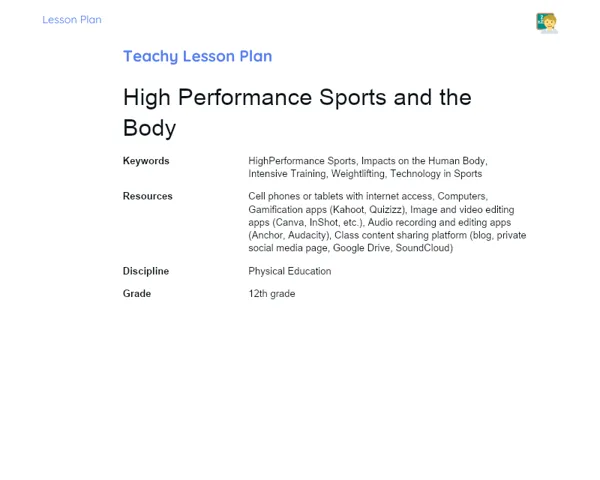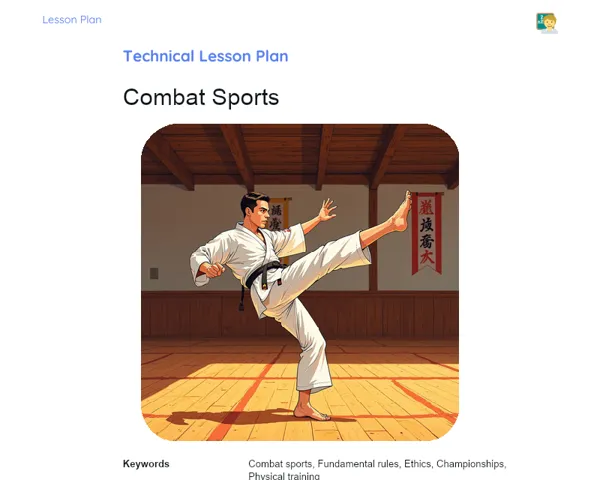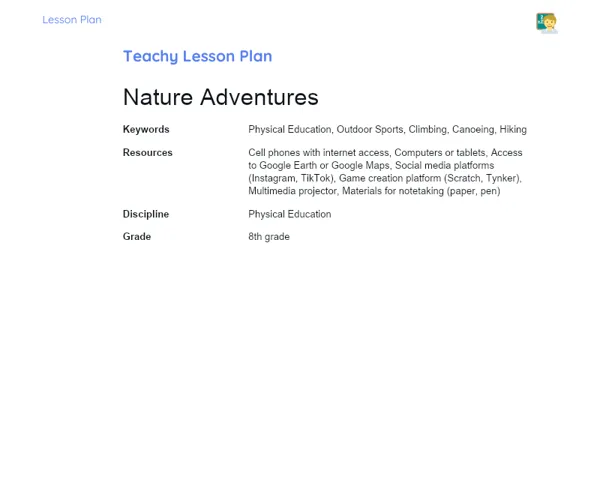Lesson Plan | Lesson Plan Tradisional | Ballroom Dancing
| Keywords | Ballroom dance, Samba de gafieira, Forró, Lambada, Salsa, Tango, Waltz, Characteristics, Rules, History, Cultural expression, Movements, Coordination, Rhythm, Social interaction |
| Resources | Whiteboard and markers, Slide presentation, Videos demonstrating ballroom dances, Speakers for music playback, Paper and pens for note-taking, A spacious area for dance demonstrations and practice |
Objectives
Duration: (10 - 15 minutes)
The aim of this stage is to give students a solid overview of ballroom dance, showcasing the variety of styles, their distinctive traits, and essential rules. This sets the stage for deeper learning in the next phases of the lesson.
Objectives Utama:
1. Introduce the concept of ballroom dance and its key features.
2. Discuss the rules and foundational principles of popular ballroom dances: samba de gafieira, forró, lambada, salsa, tango, and waltz.
Introduction
Duration: (10 - 15 minutes)
The aim here is to establish a foundational and thorough understanding of ballroom dance, spotlighting the variety of styles, defining traits, and key rules, which will prepare students for further, more specific learning down the line.
Did you know?
Did you know that ballroom dance often features in competitions and TV shows like 'Dancing with the Stars'? These programs have helped make dancing more popular, showing that anyone can learn to dance and enjoy themselves.
Contextualization
Kick off the lesson by sharing that ballroom dance is a type of social dance that sprouted from ballrooms and social gatherings in the 19th century. Highlight how ballroom dance is all about partnerships, rhythm, harmony, and coordination, and that it's practised globally in various styles. Stress that ballroom dance isn't just physical exercise, but also a beautiful cultural and artistic expression that brings together people and communities.
Concepts
Duration: (50 - 60 minutes)
The intent of this phase is to expand students' understanding of each style of ballroom dance through in-depth descriptions and practical demonstrations. This will aid students in grasping the unique characteristics, origins, and rules of each dance, while also addressing any queries they may have and aiding in solidifying their learning.
Relevant Topics
1. Samba de Gafieira: Explain it as a Brazilian ballroom dance that originated in Rio de Janeiro, known for its stylish and fluid movements along with quick steps and spins.
2. Forró: Outline that this is a traditional dance from northeastern Brazil, often danced in pairs, famous for its lively beats and energetic movements.
3. Lambada: Describe it as a Brazilian dance that shot to fame in the 1980s, merging elements of carimbó, merengue, and maxixe, known for its sensual movements and upbeat rhythms.
4. Salsa: Clarify that salsa is a dance rooted in Cuban culture and has spread in popularity across Latin America, celebrated for its quick steps and hip movements.
5. Tango: Detail that tango is a passionate ballroom dance that hails from Argentina, known for its intensity and dramatic movements.
6. Waltz: Present the waltz as a classic European dance characterized by smooth and rotational movements, typically performed in triple time.
To Reinforce Learning
1. What key traits define samba de gafieira?
2. In what ways does forró differ from other ballroom dances?
3. Can you explain the origins and key elements of lambada?
Feedback
Duration: (15 - 20 minutes)
The goal of this stage is to reinforce the knowledge gained through the lesson by encouraging valuable discussions about the various ballroom dances. This allows for clarification of uncertainty, sharing perspectives, and a deeper understanding of the topic, as well as fostering critical thought on cultural influences and the significance of dance as a form of expression.
Diskusi Concepts
1. Discuss the defining traits of samba de gafieira: This is a style of Brazilian dance from Rio de Janeiro, distinguished by its smooth and graceful movements, quick steps, and spins. The gentleman typically leads, guiding the lady through subtle signals. 2. Explore how forró differs from other ballroom dance styles: Forró is a lively dance from northeastern Brazil, performed in pairs and known for its upbeat tempo and spirited movements. It's generally more informal and often associated with social parties. 3. Describe the origins and characteristics of lambada: This Brazilian dance, which gained fame in the 1980s, blends elements from carimbó, merengue, and maxixe, noted for its sensual movements and fast-paced beats, with dancers often maintaining closeness. 4. Explain the traits of salsa: This dance emerged from Cuba and has gained traction throughout Latin America, recognized for its swift steps, hip actions, and interactive partner dynamics. Salsa is commonly found in clubs and social gatherings, with various regional styles. 5. Detail the specifics of tango: Tango originated in Argentina, exuding passion and intensity, with precise and often dramatic movements. Dancers often maintain an upright, elegant posture while performing intricate steps and brisk direction changes. 6. Elaborate on the characteristics of waltz: The waltz is a classical European dance known for its fluid and rotating movements, typically in triple time. It embodies a lightness and elegance, often performed at formal events, such as weddings and balls.
Engaging Students
1. Invite students to share which of the ballroom dances piqued their interest the most and why. 2. Encourage students to compare the different cultural origins of the dances and discuss how each region's culture has influenced these styles. 3. Prompt students to reflect on how ballroom dance serves as a cultural and artistic outlet. 4. Challenge students to think of other dance forms they're familiar with and compare them to the ballroom dances discussed. 5. Ask students if they’ve seen a ballroom dance competition or TV show, and what elements they found most captivating.
Conclusion
Duration: (10 - 15 minutes)
The aim here is to reflect on and consolidate the knowledge acquired throughout the lesson, ensuring students have a firm grasp of key topics. Additionally, this phase emphasises the practical and cultural significance of the subject, sparking students' reflections on the role of ballroom dance in various contexts.
Summary
['An introduction to ballroom dance, underscoring its roots, cultural, and social significance.', 'A thorough exploration of the main styles of ballroom dance: samba de gafieira, forró, lambada, salsa, tango, and waltz.', 'A discussion on unique characteristics, origins, and rules for each type of dance.', 'Engagement of students through interactive questions and reflections on the dances that were covered.']
Connection
The lesson bridged theoretical knowledge with practical application by offering clear explanations and demonstrations of each dance style, allowing students to visualise the movements, comprehend specific qualities, and reflect on the cultural and social significance of ballroom dance. This integration enhances understanding and makes learning applicable.
Theme Relevance
Grasping the essence of ballroom dance is crucial not only as a form of exercise but also as a means of cultural and social interaction. It encourages coordination, rhythm, and connectivity among participants, whether it be in social settings or competition. This understanding expands students' viewpoints on cultural engagement and enjoyable activities.



